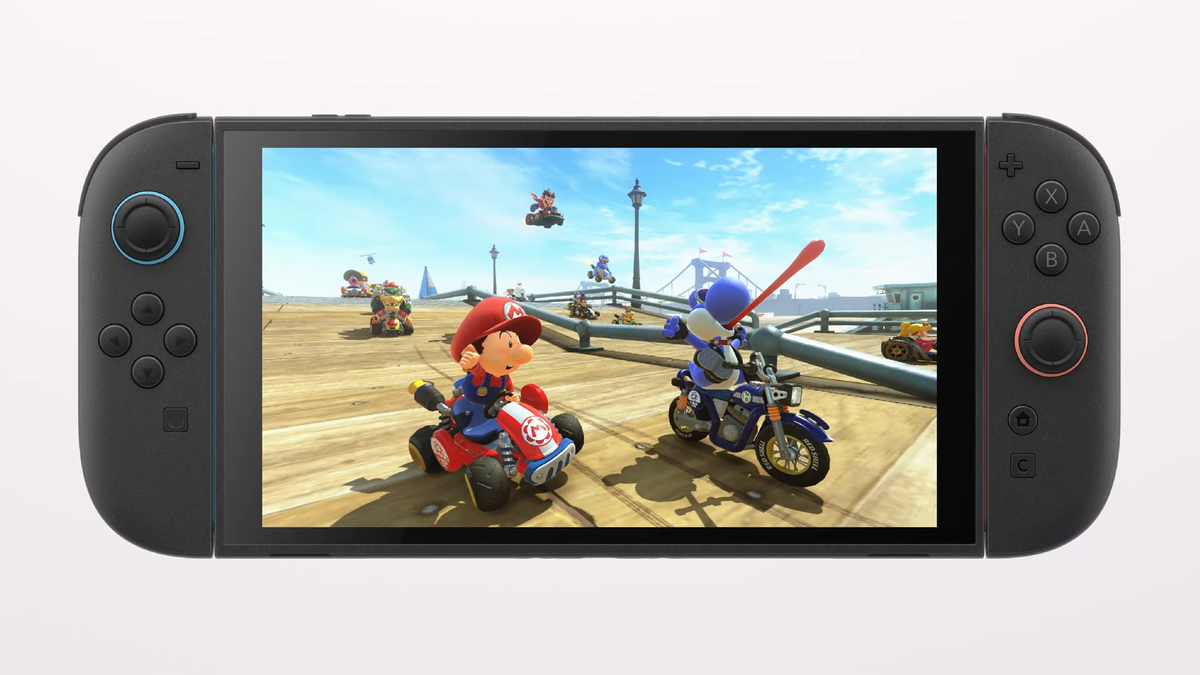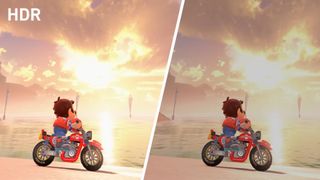
Ninty has lifted the lid on Nintendo Switch 2 display specs, and the new handheld boasts a 1080p 120Hz screen. That’s a nice uplift compared to the OG console’s 720p panel, but it should also pack enough of a punch to bring the fight to even the fiercest Steam Deck rivals. Simply put, if you prefer to play on the go, Ninty’s latest brainchild deserves a place in your backpack, and I’m excited for the direction it will take mainstream portable gaming.
Confirmed during today’s Nintendo Switch 2 Direct live event, the best gaming handheld contender will come armed with an 1080p 120Hz display built in. While using the console in docked mode will allow you to ramp things up to suit your gaming TV at 4K, the integrated 7.9-inch LCD display beats the likes of the Steam Deck OLED in terms of resolution. It will also serve up visuals at 120Hz so as to provide an even faster portable experience alongside HDR abilities that will ensure everything is super vibrant.
So, how does the new 7.9-inch Switch 2 display compare to the original’s 6.2-inch panel? Well, the 2017 handheld runs at 720p 60Hz natively, which does result in softer visuals compared to newer portables like the Asus ROG Ally. The Nintendo Switch OLED did stretch things to 7-inch and provide richer colors, but still effectively targets the same specs. The jump to 1080p 120Hz should be enough on its own to have players jumping on Nintendo Switch pre-orders, but there are a few other tricks going on that make the visual upgrade even more worthwhile.

I’ve been using the OG Switch in handheld mode since day one back in 2017, and the screen is starting to look a little soft. Don’t get me wrong, I still think the apocalyptic plains of Hyrule look pretty fantastic even on a smaller 720p display, but outings like Breath of the Wild and Tears of the Kingdom are going to look noticeably sharper on the Switch 2. That’s before we even get to enhancements like AI upscaling, and while I would have loved to also gain delicious OLED vibrancy, the newer LCD should still serve up nice colors and contrast.
Refresh rates above 60Hz are becoming commonplace within the realm of gaming. So, it only makes sense that Nintendo has opted for an 120Hz display since the Switch 2 should be able to hit a matching frame rate in many games. If it can’t, that’s where VRR (Variable Refresh Rate) could potentially in to save the day by dynamically adjusting things so that there’s no jitters. Keeping things synced up is going to matter when the new handheld can’t maintain steady fps, which is something I personally experienced while journeying through Pokemon Legends: Arceus. Nintendo hasn’t cofirmed whether VRR will be a thing, but I’ve got my fingers and toes crossed.

On the fidelity side of things, you’ll have HDR (High Dynamic Range) chiming in to enhance colors and lighting. Nintendo uses a specific shot of Mario Kart World to illustrate how the feature can add extra realism to lighting and illumination, with everyone’s favorite plumber looking out onto a horizon. I can only imagine what driving through an HDR-enhanced world, racing against pals, and enjoying the sights of the mushroom kingdom is going to feel like in handheld mode, and it’s also going to be killer if paired with a gaming monitor with greater brightness capabilities.
Better still, Nintendo is cooking up Switch 2 editions of Breath of the Wild and Tears of the Kingdom that will make full use of HDR and feed the 120Hz screen with higher frame rates. The original isn’t too scrappy feeling at 60Hz, but your quest through Hyrule is going to feel so much slicker in handheld mode than before.
Nintendo has convinced me that it understands the modern handheld assignment with the Switch 2. Matching some of the top portable gaming PCs around in terms of screen specs is going to push the bar ever higher across the board. Since even Ninty is now pulling off 1080p 120Hz, the Steam Deck 2 and rumored Xbox handheld are really going to have to step up their game to do one better, and I’m hyped for a standoff.
Weighing up your handheld options? Check out Nintendo Switch 2 vs Steam Deck for how both portables compare. Alternatively, find out more about Nintendo Switch compatibility if you’ve got a bunch of games for the OG system.


